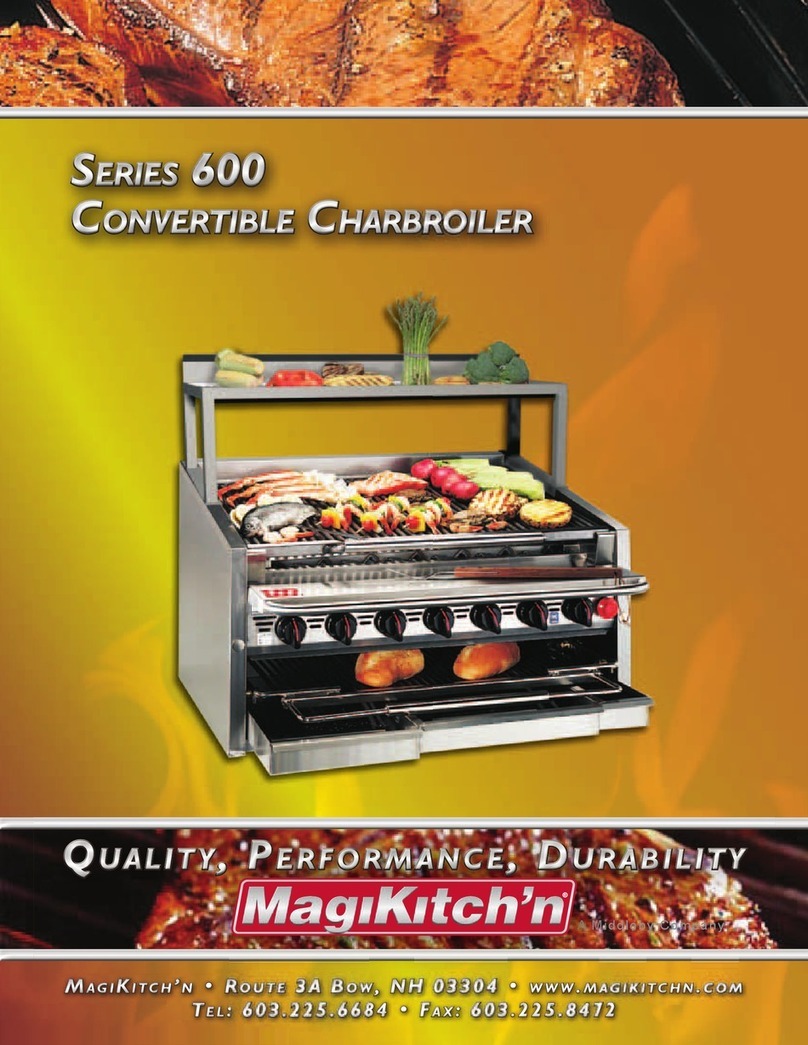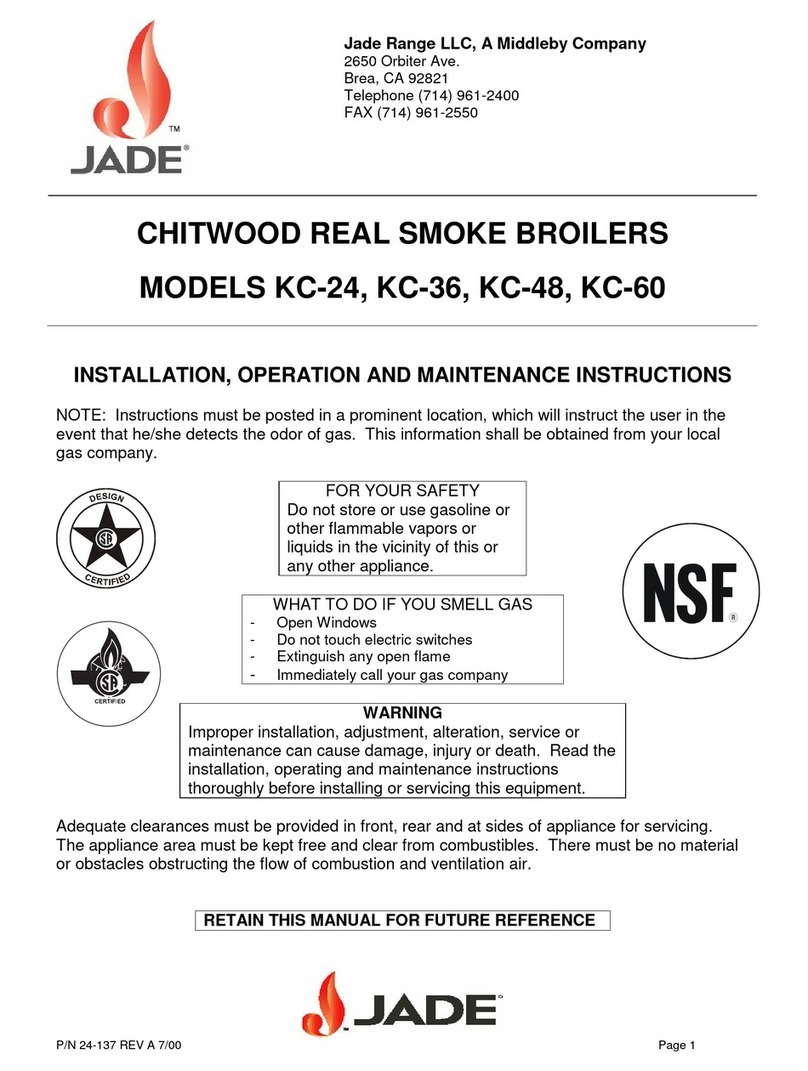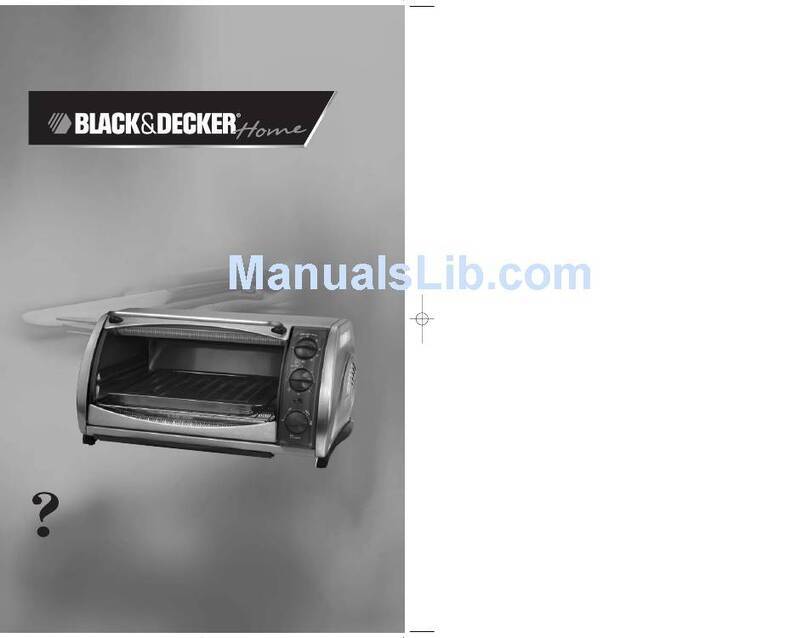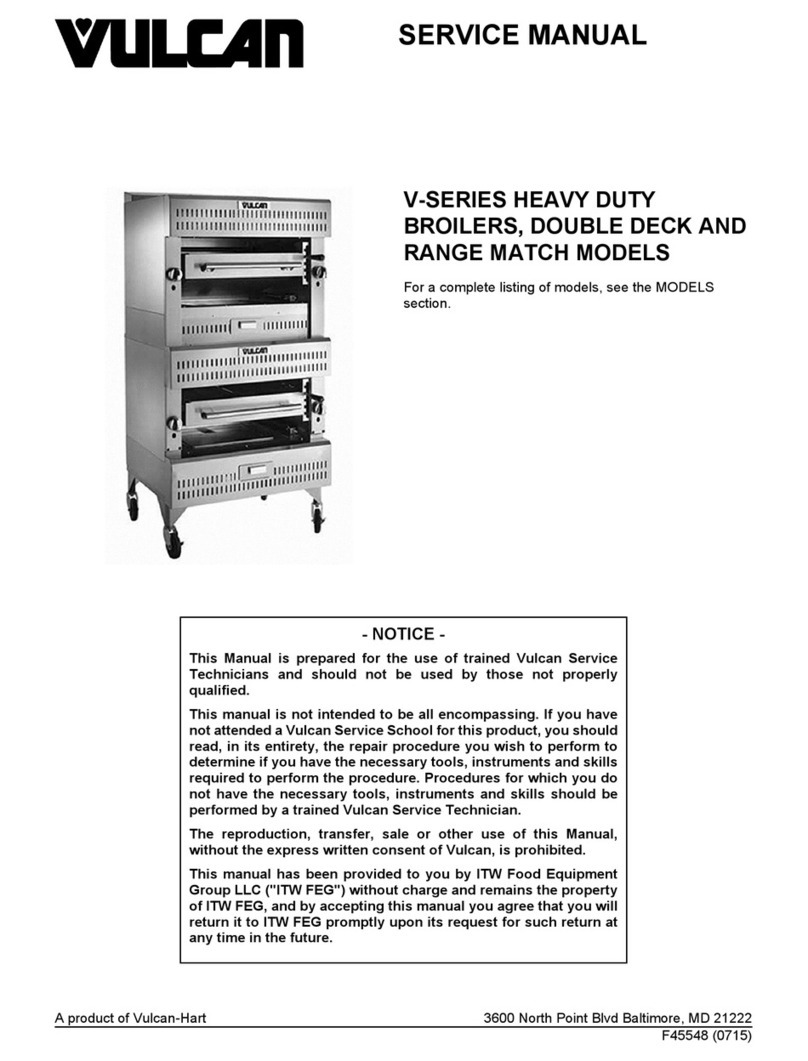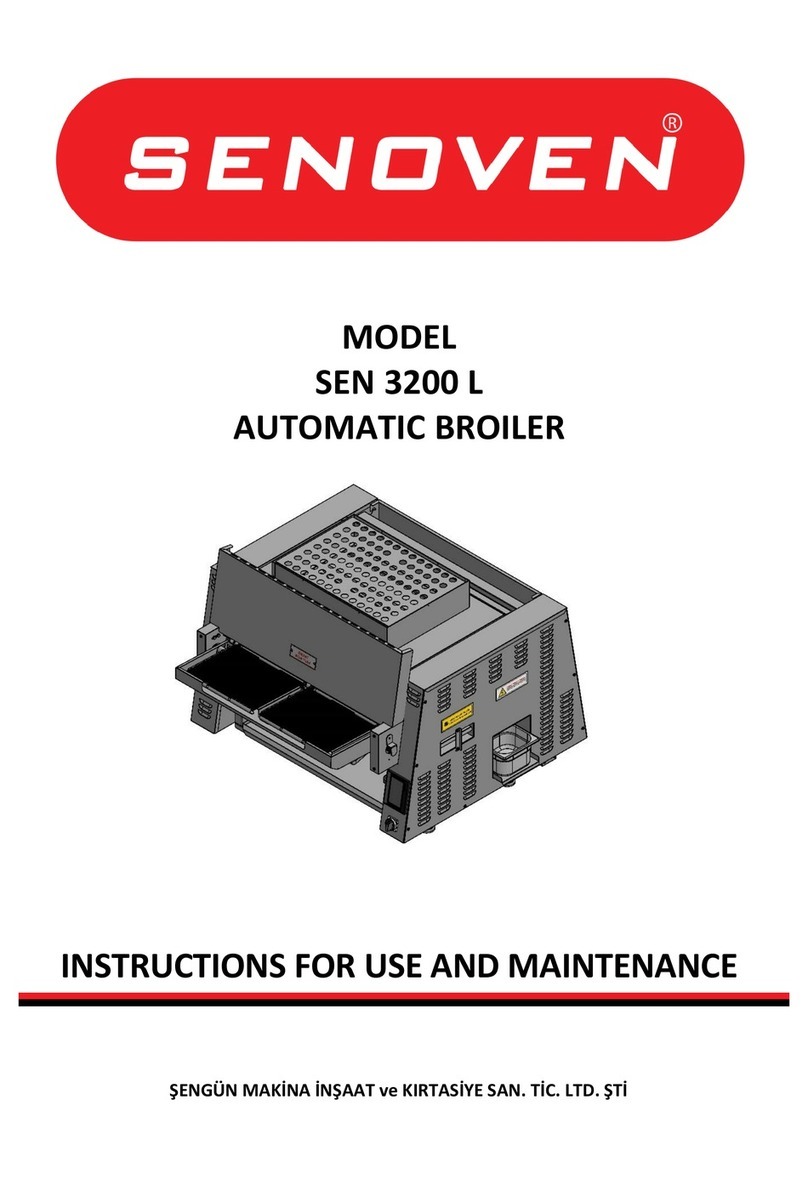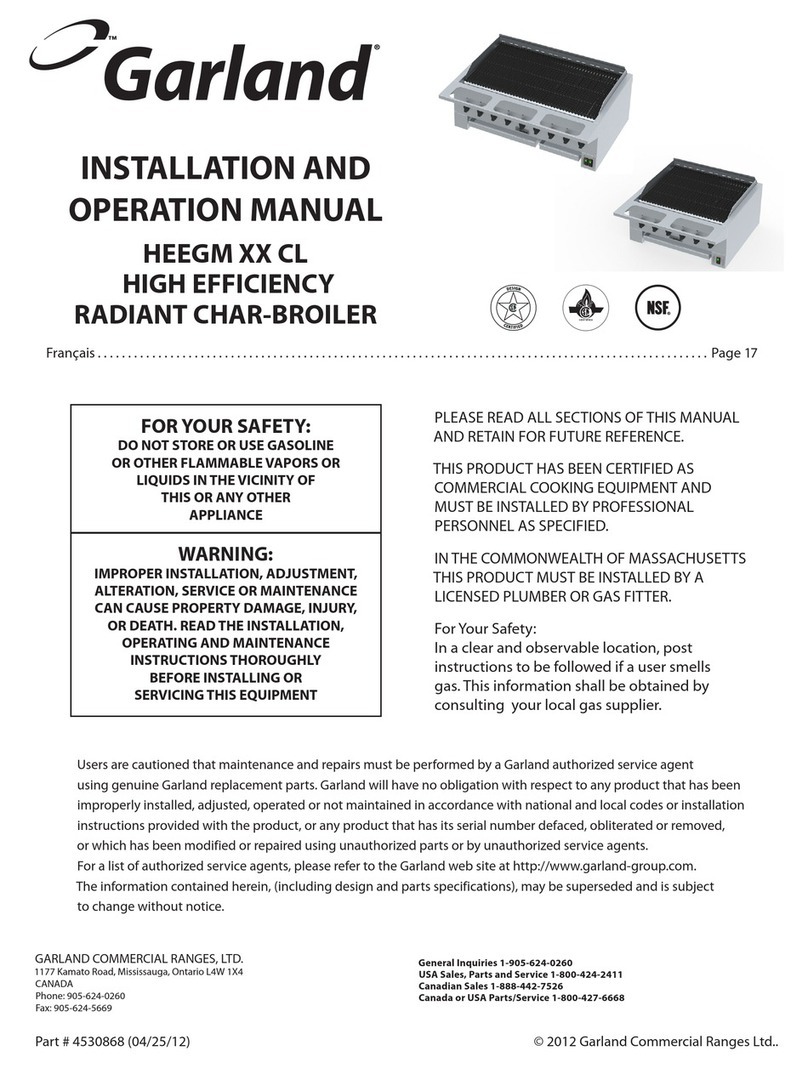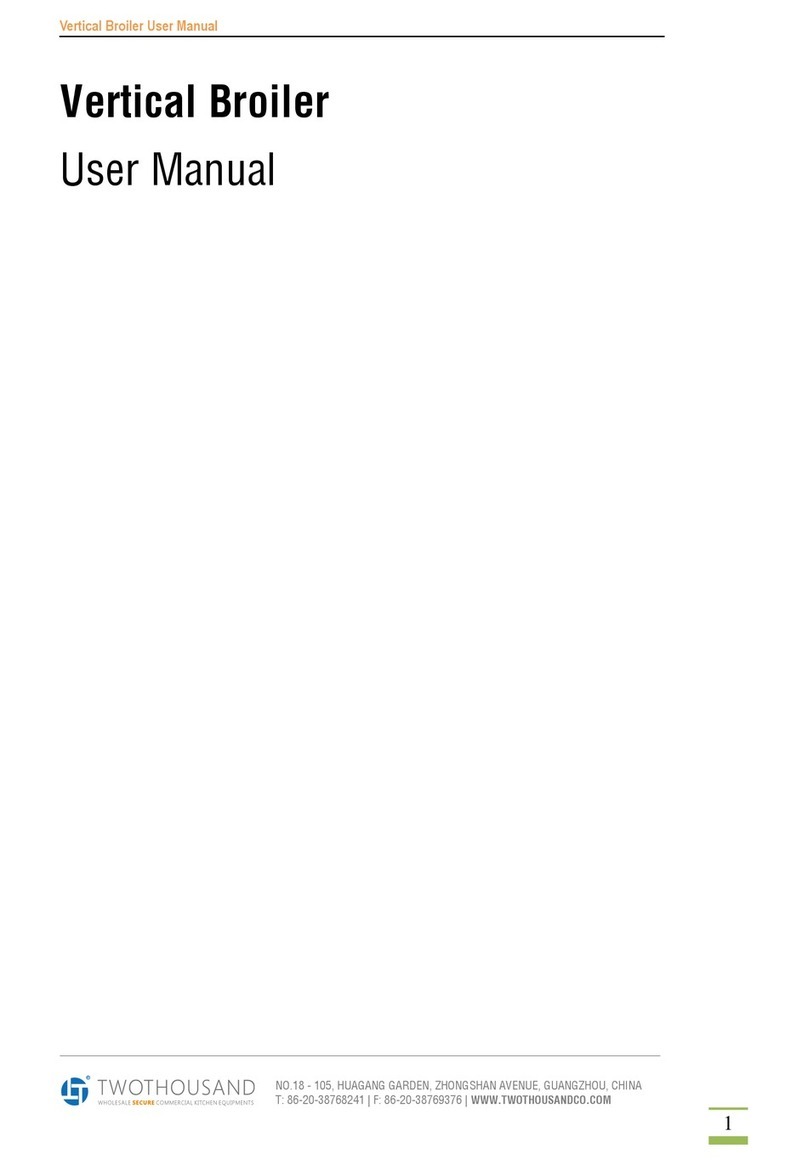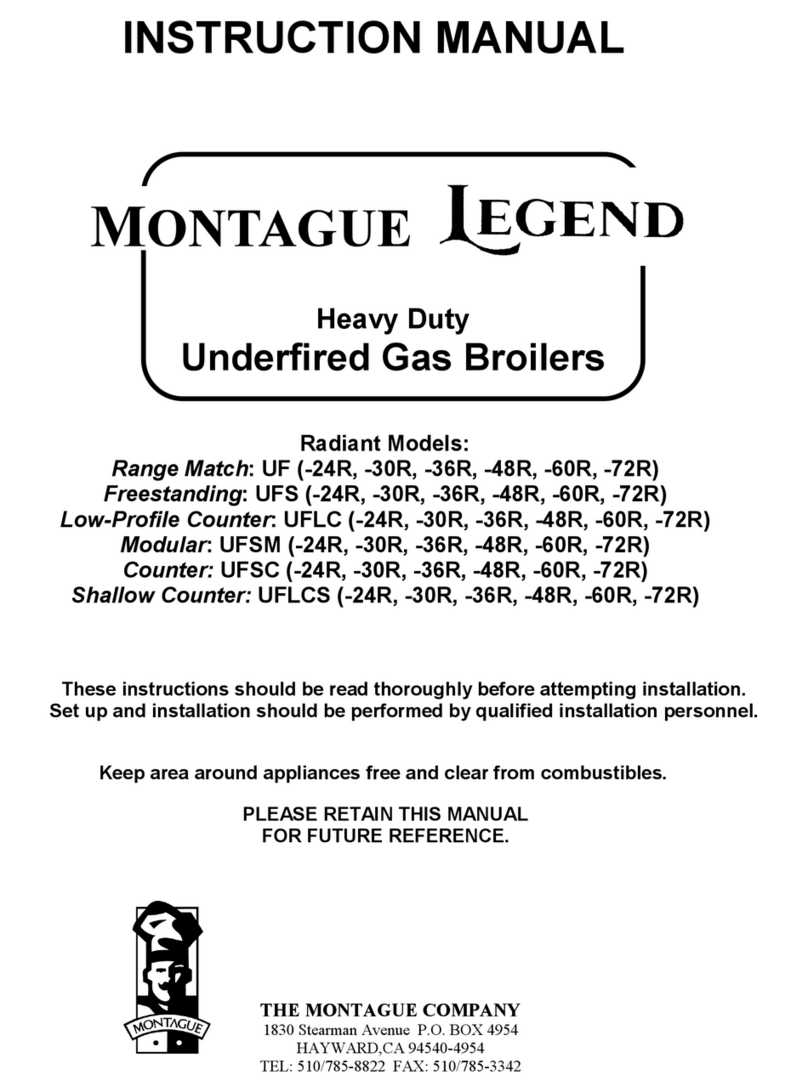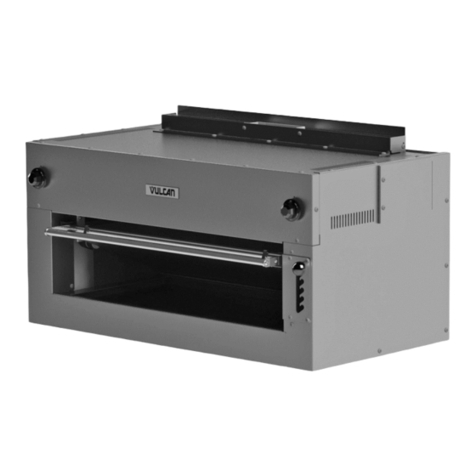
8
All fixed (non-mobile) appliances MUST be fitted
with a manual gas cook upstream of the appli-
ance to provide a means of isolation for servicing
and cleaning. A union or similar means of discon-
nection must be provided between the gas cook
and the appliance.
A manually operable valve must be fitted to the
gas supply to the kitchen to enable it to be isolat-
ed in an emergency. Wherever practical, this shall
be located either outside the kitchen or near an
exit in a readily accessible position.
Where it is not practical to do this, an automatic
isolation valve system shall be fitted which can be
operated from a readily accessible position near
the exit.
At locations where the manual isolation valve is
fitted or the automatic system can be reset, a
notice MUST be fitted, stating:
―ALL DOWNSTREAM BURNER AND PILOT
VALVES MUST BE TURNED OFF PRIOR TO
ATTEMPTING TO RESTORE THE SUPPLY.
AFTER EXTENDED SHUT OFF, PURGE
BEFORE RESTORING GAS.‖
GAS CONNECTION
Before connecting the broiler(s) to the gas supply
line, be sure that all new piping has been cleaned
and purged to prevent any foreign matter from
being carried into the controls by the gas. In some
cases, filters or drops are recommended. A
separate gas shutoff valve must be installed
upstream from the gas pressure regulator
adjacent to the broiler and located in an accessi-
ble area.
It is important that adequately sized piping be run
directly to the point of connection at the broiler
with as few elbows and tees as possible. Consult
your local gas company for proper piping size and
gas pressure. Each broiler has a 3/4" NPT
manifold input located at the lower left rear of the
broiler, Figure 4. On dual broilers, each broiler
must have a separate regulator.
NOTE: Pipe joint compound or thread sealant
that is used should be resistant to action of
liquefied petroleum gases.
Floor Mounted Ranges
1. Place the first unit in the exact position it will
occupy in the battery.
2. Using a carpenter’s level, level the unit front-
to-rear and side-to-side. AN UNLEVELED UNIT
WILL ADVERSELY AFFECT PERFORMANCE.
Adjust as follows:
FLOOR INSTALLATION ON LEGS: Level by
turning foot on leg.
CURB INSTALLATION: Place shim under the low
side. This operation is important since variations
in floors and curbs are common. Unless units are
level, aligning the gas supply manifold will be
difficult and the units will not fit together tightly.
3. Remove the valve panel from the broiler.
4. Move the next unit into position.
5. Engage union nut on manifold with male fitting
on next unit and draw up union nut hand tight. Be
sure appliances meet together both front and rear.
If manifolds do not align, then units are not level.
In extreme cases, it may be necessary to loosen
manifold bolts and adjust.
6. Continue leveling and connecting gas supply
manifolds together until all appliances in battery
are connected.
7. Tighten manifold gas union. Use backup
wrench to prevent manifold from rotating.
FAILURE TO DO THIS MAY RESULT IN
DAMAGE TO THE PILOTS AND GAS VALVES.
GAS SUPPLY
The local gas region should be consulted at the
installation planning stage in order to establish the
availability of an adequate supply of gas and to
ensure that the meter is adequate for the required
flow rate. The pipe work from the meter to the
appliances must be of appropriate size. Where a
number of appliances are installed in a battery, no
more than five should be served by any one
supply pipe.


